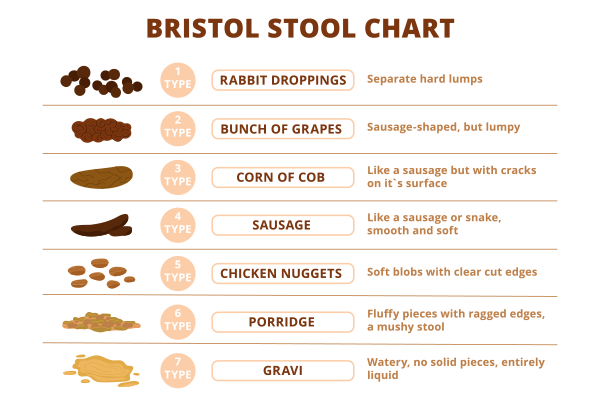
Noticing blood in your stool can be alarming, but it doesn’t always indicate a serious problem. In some cases, it can result from minor issues like piles (also called haemorrhoids), while in others, it may signal more severe conditions like colorectal cancer. Understanding the types of blood in stool, possible causes, associated symptoms, and available diagnostic tests can help you take the right steps toward treatment and prevention.
Synopsis
Types of Blood in Stool
Different appearances of blood in stool can indicate various medical conditions:
|
Type of Blood |
Possible Causes |
|
Bright Red Blood |
Piles, anal fissures, diverticulitis |
|
Dark or Black Stools (Melena) |
Stomach ulcers, gastritis |
|
Occult Blood |
Detected through lab tests |
Causes of Blood in Stool

Several conditions can lead to blood in stool, ranging from mild to severe:
1. Piles (Hemorrhoids)
Swollen blood vessels in the rectum or anus, are commonly caused by straining, constipation, or pregnancy.
2. Anal Fissures
Small tears in the anus, lead to pain and bright red bleeding.
3. Diverticulosis and Diverticulitis
Formation of small pouches in the colon that can become inflamed and bleed.
4. Gastrointestinal (GI) Bleeding
Bleeding anywhere in the digestive tract due to ulcers, gastritis, or oesophagal varices.
5. Colorectal Polyps and Cancer
Abnormal growths in the colon or rectum can sometimes turn cancerous.
6. Inflammatory Bowel Disease (IBD)
Chronic inflammation of the digestive tract, including Crohn’s disease and ulcerative colitis.
7. Peptic Ulcers
Sores in the stomach lining are often caused by H. pylori infection or long-term NSAID use.
8. Infectious Diarrhea
Bacterial or viral infections lead to bloody diarrhoea.
Symptoms to Watch For
Along with blood in the stool, other symptoms may indicate an underlying condition:
-
Abdominal pain or cramping
-
Unexplained weight loss
-
Changes in bowel habits (diarrhoea or constipation)
-
Fatigue or dizziness (due to blood loss)
-
Nausea or vomiting blood
Risk Factors
Certain factors can increase the likelihood of blood in stool:
-
Age: Colorectal cancer is more common in individuals over 45.
-
Lifestyle Habits: Low-fiber diet, smoking, alcohol consumption.
-
Family History: Genetic predisposition to digestive disorders or cancer.
-
Chronic Conditions: Obesity, diabetes, or hypertension.
Diagnosis of Blood in Stool
Doctors use several methods to identify the cause:
|
Diagnostic Test |
Purpose |
|
Physical Examination |
To check for piles or fissures |
|
Fecal Occult Blood Test (FOBT) |
Detects hidden blood |
|
Colonoscopy |
Examines the colon for polyps, tumours, or inflammation |
|
Sigmoidoscopy |
Focuses on the lower colon |
|
Endoscopy |
Identifies bleeding in the esophagus or stomach |
|
Imaging Tests (CT scan, MRI) |
Helps detect abnormalities |
|
Blood Tests |
Checks for anaemia or infections |
When to See a Doctor
Seek immediate medical attention if you experience:
-
Persistent bleeding lasting more than a few days
-
Severe abdominal pain
-
Black, tarry stools (Melena)
-
Presence of clots or excessive bleeding
Treatment Options
Treatment depends on the cause of blood in stool:
1. Lifestyle and Dietary Modifications
-
Increase Fiber Intake: Helps prevent constipation.
-
Stay Hydrated: Aids digestion and softens stools.
-
Use Sitz Baths: Soothes anal irritation.
-
Exercise Regularly: Reduces straining and improves bowel movements.
2. Medications
-
Antibiotics for infections.
-
Anti-inflammatory drugs for IBD.
-
Proton pump inhibitors (PPIs) for ulcers.
3. Medical Procedures
-
Endoscopic treatments for bleeding polyps.
-
Rubber band ligation for piles.
-
Sclerotherapy for varicose veins in the oesophagus.
4. Surgery
For severe conditions like colorectal cancer or advanced IBD.
Prevention Tips
-
Eat a fibre-rich diet with fruits, vegetables, and whole grains.
-
Avoid processed foods and stay hydrated.
-
Exercise regularly to maintain gut health.
-
Avoid smoking and excessive alcohol consumption.
-
Schedule regular screenings for colorectal cancer.
Conclusion
While blood in the stool can be due to mild conditions, it’s essential to recognize warning signs and seek medical advice if needed. Early diagnosis and lifestyle modifications can help prevent serious complications.
If you are experiencing any symptoms, visit Manipal Hospital Jaipur for expert diagnosis and treatment. Our team of specialists ensures the best care for your gastrointestinal health. Book an appointment today!
FAQ's
Stress doesn’t directly cause bleeding but can worsen conditions like IBD or ulcers.
No, it can be due to minor issues like piles or fissures. However, persistent bleeding needs medical attention.
Yes, a low-fiber diet can cause constipation, increasing the risk of piles or fissures.
Not always, but black stools, severe pain, or heavy bleeding require immediate medical care.
Most people recover in 2 to 4 weeks, depending on the procedure.
Yes, they can increase the risk of gastrointestinal bleeding.
Yes, increasing fibre intake, staying hydrated, and using probiotics may help.
Spicy foods can irritate haemorrhoids or ulcers, but they do not directly cause bleeding.
Consult a doctor immediately to determine the underlying cause.





















 4 Min Read
4 Min Read














